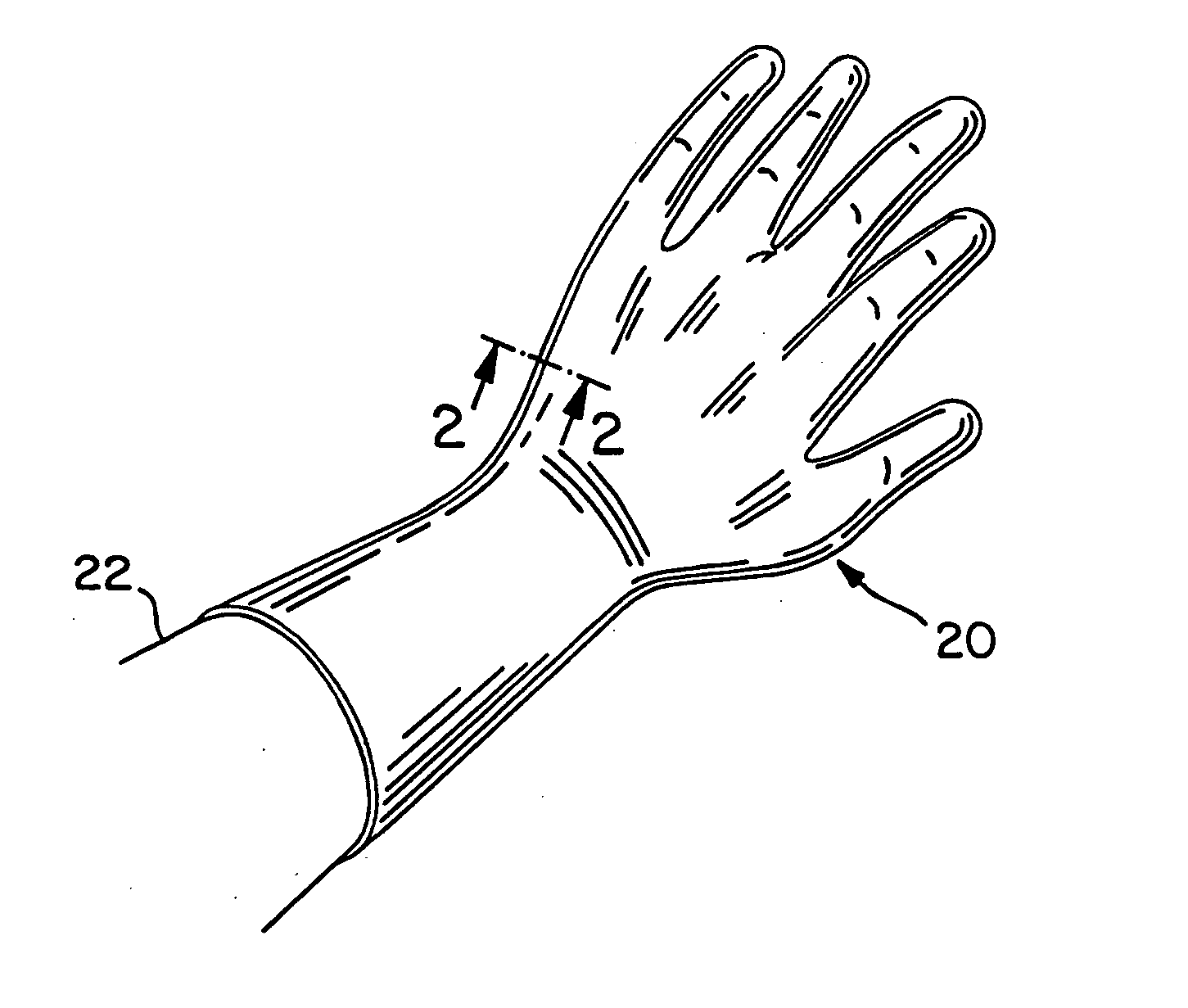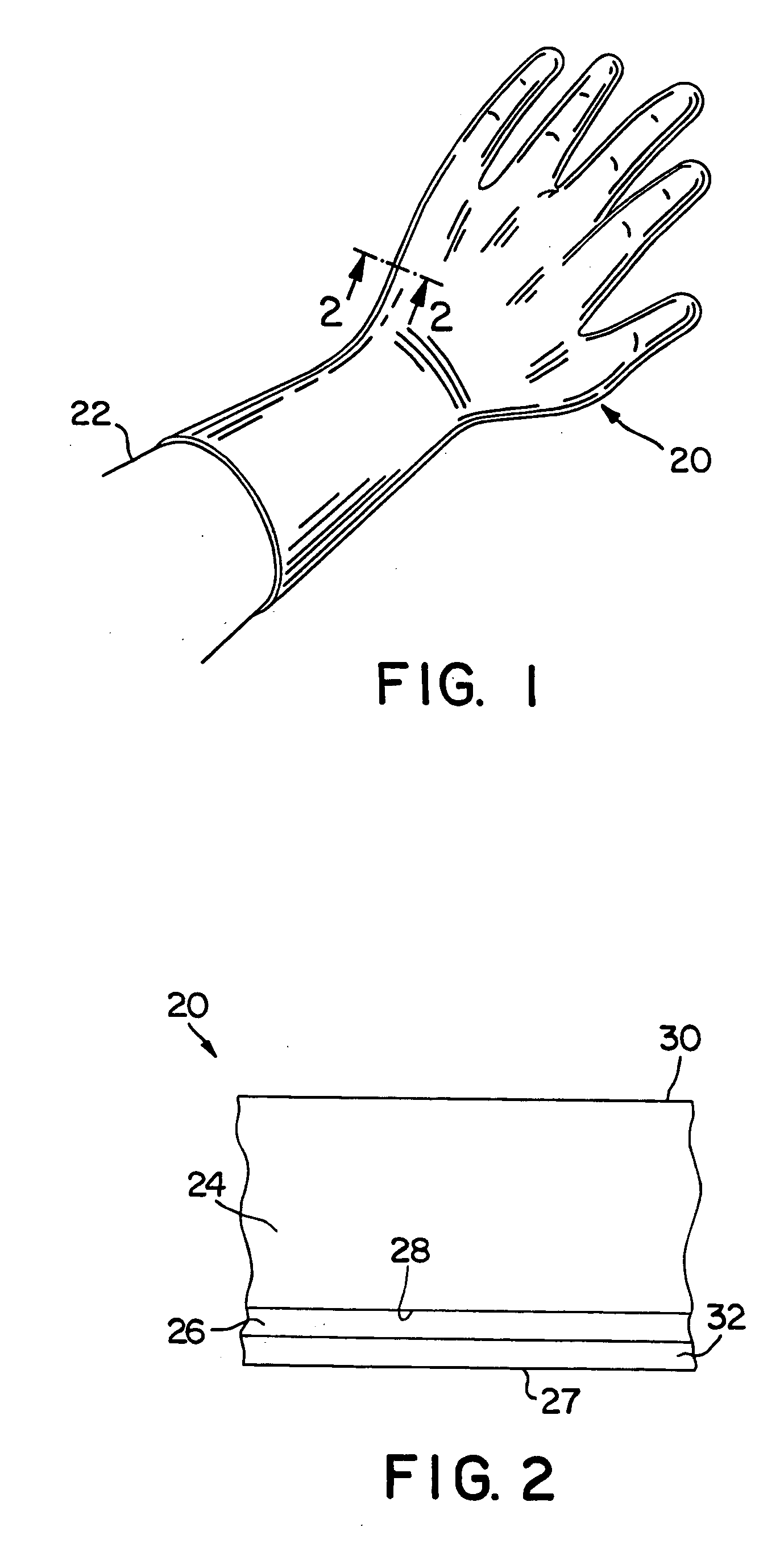Method for forming an elastomeric article
a technology of elastomeric gloves and elastomeric articles, which is applied in the field of elastomeric gloves, can solve the problems of time-consuming, costly, inefficient, and difficult to wear, and achieves the effects of reducing the number of surgical procedures
- Summary
- Abstract
- Description
- Claims
- Application Information
AI Technical Summary
Problems solved by technology
Method used
Image
Examples
example
[0056] The ability to form an elastomeric article in accordance with the present invention was demonstrated. Initially, a glove-shaped former was dipped into a dip tank that contained a coagulant composition. Specifically, the coagulant composition contained 15% by weight calcium nitrate, 6% by weight calcium carbonate, 0.15% surfactant, and water so that the resulting solids content was about 21%. After dipping, the former into the coagulant, it was removed from the coagulant composition and dried a temperature of 115° C. Next, the former was dipped into a compound of natural rubber latex and allowed to air dry. The resulting substrate body was beaded and leached with water. The thickness of the resulting substrate body was 0.27 millimeters.
[0057] The glove was then dipped for 5 to 10 seconds in a polyalcohol-based primer (minimum solids content of 20%) available from Delta Polymer Systems Sdn. Bhd. of Selangor, Malaysia under the name “ACTIVE BOND.” After drying the primer, the g...
PUM
| Property | Measurement | Unit |
|---|---|---|
| thickness | aaaaa | aaaaa |
| water content | aaaaa | aaaaa |
| water content | aaaaa | aaaaa |
Abstract
Description
Claims
Application Information
 Login to View More
Login to View More - R&D
- Intellectual Property
- Life Sciences
- Materials
- Tech Scout
- Unparalleled Data Quality
- Higher Quality Content
- 60% Fewer Hallucinations
Browse by: Latest US Patents, China's latest patents, Technical Efficacy Thesaurus, Application Domain, Technology Topic, Popular Technical Reports.
© 2025 PatSnap. All rights reserved.Legal|Privacy policy|Modern Slavery Act Transparency Statement|Sitemap|About US| Contact US: help@patsnap.com


